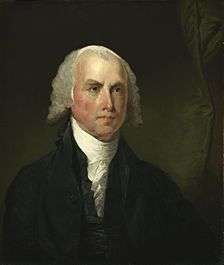Federalist No. 39

The Federalist No. 39 “The conformity of the Plan to Republican Principles,” is the thirty-ninth of The Federalist Papers and was published by James Madison on January 18, 1788. Madison defines what a Republican form of government is considered, which was what the nation was currently called. It also considers whether the nation is federal or national: a confederacy, or consolidation of states. At the current moment the nation was considered Federal and states were confederate, but they were leaning towards A National government. (federal vs. national government.) Madison then defines what republic means and states three rules which must comply to be considered a Republic:
- What is the foundation of its establishment? Only the people of the nation and no one else would make the decision of who rules the government.
- What are the sources of its power? The person who is chosen by the people shouldn’t break any rules nor abuse the power that they have.
- Who has the authority to make future changes? When someone is chosen to rule the country, they should only be in that position for a certain amount of time unless the people of the nation feel that it’s best to impeach them.[1]
This corresponds to the Madisonian Republic, which means the system of government where the citizens of the state elect representatives to make decisions for them using three powerful branches, the executive, the judicial, and the legislative.
From early in the Constitutional Convention, Madison held the position that the national government should be federal, because if it was more extensive in relation to the states that would increase the, "probability of duration, happiness and good order”.[2] It was not initially clear how the new government would interact with the states, and Madison was in favor of a federal form, a, "government whereby political power is divided between a central or national authority and smaller, locally autonomous units such as provinces or states, generally under the terms of a constitution. A federal government, or federation, is usually formed through the political union of two or more formerly independent states under one sovereign government that does not, in any case, arrogate the individual powers of those states." (Federal Government). Other alternatives included a confederacy as under the Articles of Confederation or a more strictly national government.[3]
Federalist No. 39 is an essay written by James Madison written to urge ratification of the U.S. Constitution. James Madison, along with Alexander Hamilton and John Jay, sent these essays to try to sway the remaining nine states to preserve the Federal form of government, with a National government interest.[4]
Background
Madison saw what older governments were like, and saw that he could improve them. He didn’t want a constitution based on a nationalist, or federalist basis. He also saw that there was no such thing as a true republic in his mind.
Although modern usage tends to accept Madison’s definition of a Republic as a system of government where the citizens of the state elect representatives to make decisions for them, this was not the only system of government that was called a republic (the Roman republic, for example, worked very differently), and the Madisonian republic represented a specific and distinct type of government system.
The Roman Republic was a republic, but it was heavily monopolized at the top—almost aristocratic, in a sense, as they only cared about the rich. The poor were treated as outcasts, and not members of society—they were also viewed as politically immature and couldn’t even talk at public meetings. This was not viewed the same way in the Madisonian Republic: there, everyone is treated equally and has a say.[5]
References
- ↑ "The Federalist Papers No. 39".
- ↑ "Contemporary Visions Of The Early Federalist Ideology Of James Madison: An Analysis Of The United States Supreme Court's Treatment Of The Federalist No. 39.". Washington University Journal Of Law & Policy (2004): 257-287. 16.
- ↑ Diamond, Martin. "The Federalist on Federalism". The Yale Law Journal. 86.6.
- ↑ "Federalist Papers".
- ↑ Mouritsen, Henrik (2001). Plebs and Politics in the Late Roman Republic. Cambridge. pp. 2–7.